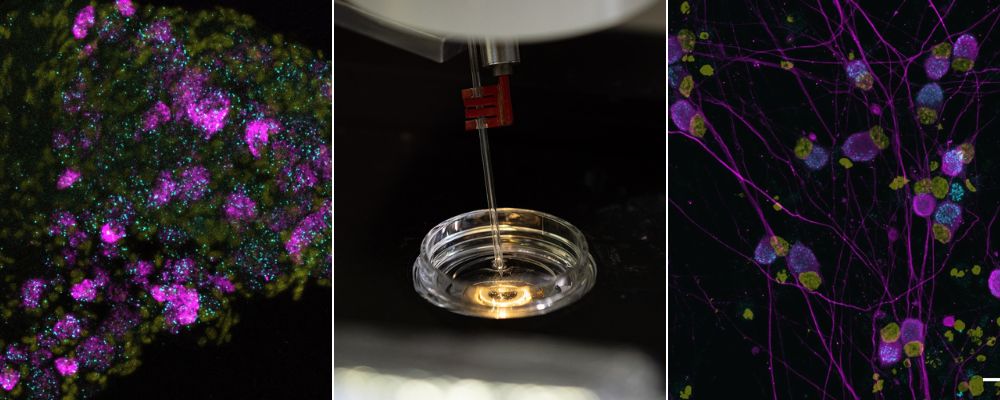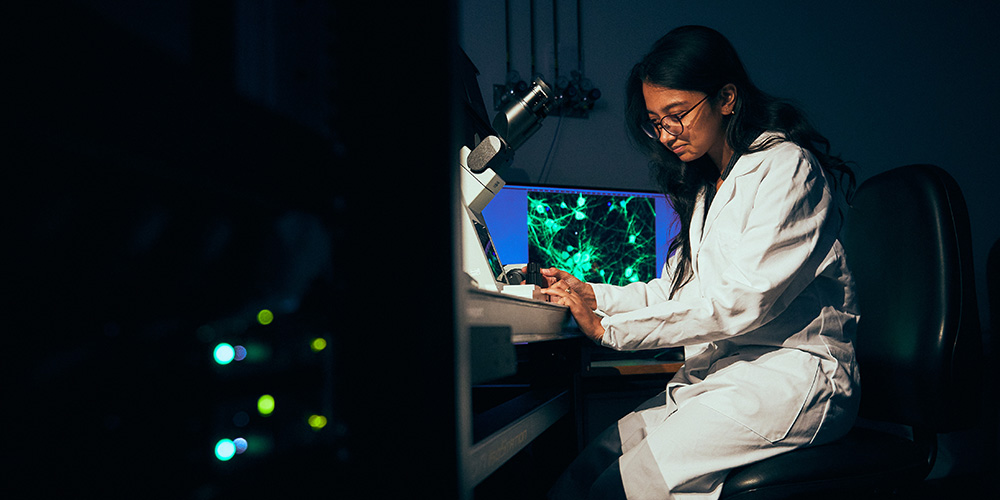A new channel for touch
Every hug, every handshake, every dexterous act engages and requires touch perception. Therefore, it is essential to understand the molecular basis of touch.
“Until now, we had known that the ion channel – Piezo2 – is required for touch perception, but it was clear that this protein alone cannot explain the entirety of touch sensation,” says Gary Lewin, head of the Molecular Physiology of Somatic Sensation Lab at the Max Delbrück Center.
For over 20 years Lewin has been studying the molecular basis of the sensation of touch. He and his team have now discovered a new ion channel, named Elkin1, that plays a vital role in touch perception. This is only the second ion channel implicated in the touch perception. It is likely that the protein is directly involved in converting a mechanical stimulus, such as light touch, into an electrical signal. When Elkin1 is present, the receptors in the skin can transmit the touch signals via nerve fibers, to the central nervous system and brain. The researchers have published their findings in the journal Science.

Lewin’s team came across Elkin1 a few years ago while investigating a malignant melanoma cell line. The researchers had found that the protein is required for sensing mechanical forces by these highly motile cancer cells. “Now we wanted to determine whether the same protein also plays a role in touch sensation” says Lewin.
Lack of Elkin1 reduces touch sensitivity
The researchers bred genetically modified mice that lacked the Elkin1 gene. They then conducted simple behavioral experiments that involved lightly brushing a cotton swab against the rodents’ hind paws. “Usually, normal mice react to the cotton swab 90% of the time,” Lewin said. “In contrast, mice lacking Elkin1 only reacted half of the time, indicating touch insensitivity”. Importantly, the rodents’ reaction to non-mechanical stimuli like temperature was not affected.
At the neuronal level, Sampurna Chakrabarti, a scientist in Lewin’s team, used the patch clamp method to record the electrical activity of sensory neurons in response to poking of the neuronal membrane. “Around half of the neurons in genetically modified mice lacking Elkin1 didn’t respond to mechanical stimuli, and no signal transmission occurred,” Chakrabarti said.
Further experiments confirmed that there were no signals relayed from the neuron’s receptor ending in the skin, on the first leg of the signals journey from skin to the spinal cord and brain. Furthermore, their Australian collaborators in the lab of Professor Mirella Dottori in the University of Wollongong tested whether Elkin1 in necessary for touch transduction in human sensory neurons grown in a petri dish from stem cells. Their findings also strongly suggest that Elkin1 could play a major role in human touch perception.

The researchers assume that during normal signal transmission, Elkin1 and Piezo2 share roles in touch perception. They have also found evidence that Elkin1 may play a part in the transmission of painful mechanical stimuli. “If this is confirmed to be the case, we will have not only identified a second ion channel with an indispensable role in normal touch perception, but also a new potential target for treating chronic pain,” Lewin said.
This article was originally published on the Max Delbrück Center website. You can read the original here.
Enjoy reading ASBMB Today?
Become a member to receive the print edition four times a year and the digital edition monthly.
Learn moreGet the latest from ASBMB Today
Enter your email address, and we’ll send you a weekly email with recent articles, interviews and more.
Latest in Science
Science highlights or most popular articles

Mining microbes for rare earth solutions
Joseph Cotruvo, Jr., will receive the ASBMB Mildred Cohn Young Investigator Award at the ASBMB Annual Meeting, March 7–10, just outside of Washington, D.C.

Fueling healthier aging, connecting metabolism stress and time
Biochemist Melanie McReynolds investigates how metabolism and stress shape the aging process. Her research on NAD+, a molecule central to cellular energy, reveals how maintaining its balance could promote healthier, longer lives.

Mapping proteins, one side chain at a time
Roland Dunbrack Jr. will receive the ASBMB DeLano Award for Computational Biosciences at the ASBMB Annual Meeting, March 7–10, just outside of Washington, D.C.

Exploring the link between lipids and longevity
Meng Wang will present her work on metabolism and aging at the ASBMB Annual Meeting, March 7-10, just outside of Washington, D.C.

Defining a ‘crucial gatekeeper’ of lipid metabolism
George Carman receives the Herbert Tabor Research Award at the ASBMB Annual Meeting, March 7–10, just outside of Washington, D.C.

The science of staying strong
Muscles power every movement, but they also tell the story of aging itself. Scientists are uncovering how strength fades, why some species resist it and what lifestyle and molecular clues could help preserve muscle health for life.

